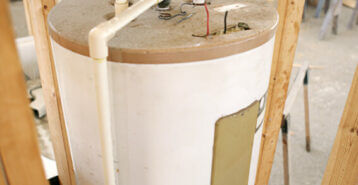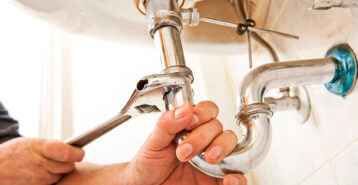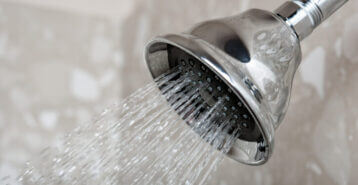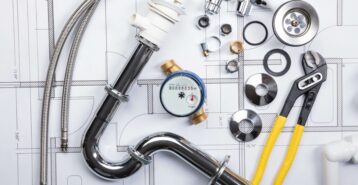What Is a Garbage Disposal?
Garbage disposals are essential kitchen appliances that help manage food waste efficiently. A garbage disposal is an electrically powered device mounted beneath a kitchen sink. It shreds food waste into small pieces, allowing it to flow through your plumbing system without causing blockages. This not only helps with waste management but also keeps the kitchen clean and odor-free.
How Garbage Disposals Work
Garbage disposals use a compact electric motor to power a spinning flywheel located at the base of the unit. Attached to the flywheel are impellers, small, blunt metal arms that force food waste against a stationary grind ring. This grind ring, lined with sharp grooves, breaks down the food into fine particles without using actual blades. Once ground, the waste is mixed with running water and flushed through the kitchen plumbing and into your sewer or septic system. Some advanced models also include anti-jam features and sound insulation for quieter operation.
Main Components of Garbage Disposal Systems
A garbage disposal may look simple from the outside, but it relies on several key parts working together to grind food waste and move it safely through your plumbing. Use the infographic below to see where each component sits and what it does.
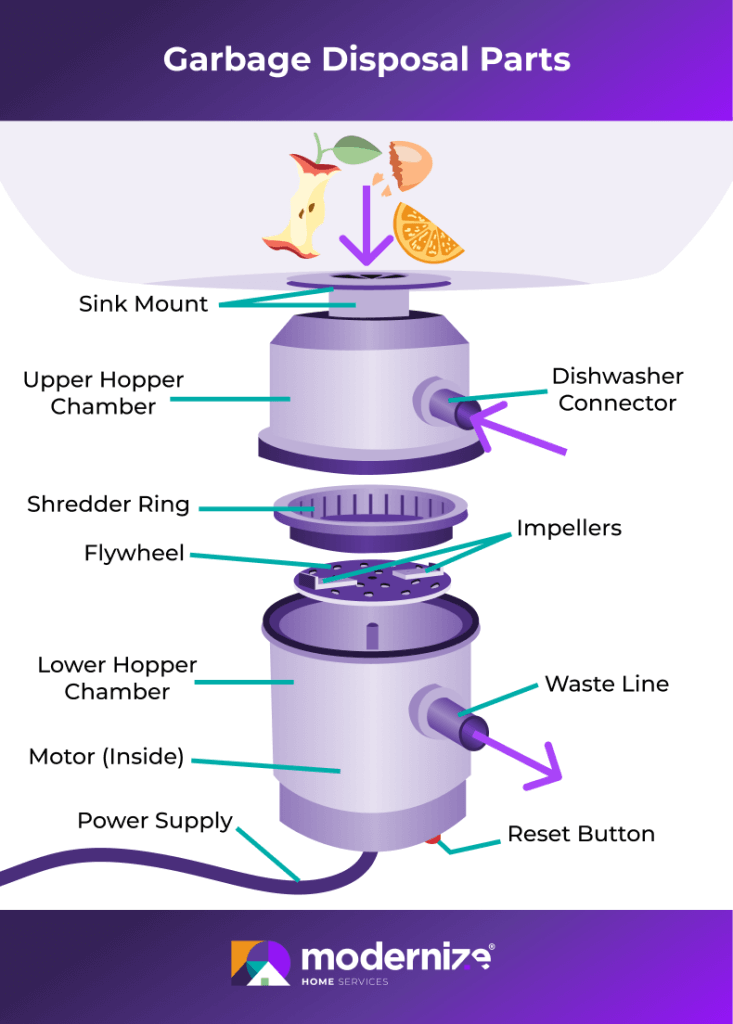
Here’s a quick look at the role of each of these primary components:
- Motor: Powers the grinding mechanism.
- Flywheel and Impellers: Spin to push food waste against the shredder ring.
- Shredder Ring: Breaks down food into small particles.
- Upper and Lower Hoppers: Encase the internal components.
- Mounting Assembly: Connects the disposal to the sink.
- Reset Button: Resets the unit in case of overload.
- Waste Line: Where the food particles exit the system.
- Power Supply: Provides electricity to the motor.
Types of Garbage Disposals
Garbage disposals come in two main types: continuous feed disposal systems and batch feed disposal systems.
Continuous Feed Disposal Systems
This is the most common type of garbage disposals, activated by a switch usually located on the wall. They allow continuous feeding of waste while running.
Best for:
- Busy kitchens that generate a lot of food waste.
- Homeowners who want fast, uninterrupted operation.
- Homeowners who are comfortable with using disposals regularly.
Pros:
- Easy to use—just flip the switch and feed waste as needed.
- Generally more affordable.
- Ideal for clearing large amounts of waste quickly.
Cons:
- Slightly higher risk of objects falling in while running.
- Requires careful use to avoid accidents.
Batch Feed Disposal Systems
These units only run when a special stopper or cover is locked into place. Instead of feeding food scraps continuously, you load a “batch,” close the lid, and then the disposal activates.
Best for:
- Families with children.
- Households concerned about safety.
- Occasional-use kitchens that don’t produce heavy food waste.
Pros:
- Much safer—nothing can fall in while it’s operating.
- Reduces the chance of foreign object damage.
Cons:
- Typically more expensive than continuous feed units.
- Slower for large amounts of waste since scraps must be loaded in batches.
How Much Does it Cost to Replace, Install, or Repair a Garbage Disposal?
On average, homeowners spend between $100 and $550 to replace or install a garbage disposal, depending on whether they do it themselves or hire a professional plumber to install it.
Some factors that influence this cost include:
- Type and brand of disposal.
- Complexity of installation.
- Local labor rates.
DIY Replacement
For a DIY garbage disposal installation or replacement, most homeowners spend $100 to $300 for a new disposal unit, plus any cost for tools or supplies if not already owned.
Homeowners with basic plumbing and electrical skills can usually handle installing or replacing a garbage disposal on their own, as long as the unit is accessible and plumbing is in good condition. The project involves a simple swap-out as long as the existing wiring and mounting bracket are compatible.
Professional Installation
For a professional garbage disposal installation or replacement, most homeowners spend $200 to $550, which typically includes labor, basic materials, and disposal of the old unit if needed.
Hiring a licensed plumber or electrician is recommended when the installation is more complex—such as when wiring needs to be updated, plumbing must be modified, or the existing mounting hardware is incompatible. Professional installation is also ideal for older homes, hard-to-access sinks, or situations where leaks or electrical issues need troubleshooting.
Repair
Most homeowners spend $100 to $450 for garbage disposal repairs, with the final cost depending on the type of issue and whether any replacement parts are needed. Common repairs, such as clearing jams, fixing leaks, restoring power, or addressing slow drainage, typically fall on the lower end of the range, while motor-related problems or internal component failures tend to be more expensive.
Repairs are generally straightforward for a trained plumber, especially when the unit is accessible and the problem is isolated to a single component. More complex issues, such as motor burnout or significant leaks, may require additional labor or parts and can sometimes approach the cost of full replacement.
Garbage Disposal Repair vs. Replacement
Deciding whether to replace or repair your garbage disposal depends on the age of the unit, the type of issue you’re facing, and overall performance. Here’s how to tell the difference:
When a Repair Makes Sense:
- Minor Jams or Clogs. These can often be cleared using an Allen wrench or by removing debris manually.
- Loose Connections or Leaks. Tightening fittings or replacing worn gaskets may resolve the issue without needing a new unit.
- Reset or Overload Issues. If the reset button frequently trips, it might just need a simple reset or cleaning.
- Strange Noises. Rattling could be caused by a non-food item caught inside and may not require replacement.
When to Consider a Full Replacement:
- Frequent Breakdowns. If you’re resetting the unit often or dealing with recurring clogs, the motor or internal parts may be wearing out.
- Rust or Visible Cracks. These are signs of long-term wear and could lead to water damage if ignored.
- Declining Performance. If your disposal isn’t grinding efficiently or is draining slowly despite maintenance, it may be at the end of its life.
- Outdated or Underpowered Units. Older models may lack the horsepower or safety features of modern disposals.
- Over 10 Years Old. If your unit is a decade or older, replacing it may be more cost-effective than continued repairs.
If you’re unsure whether a repair or replacement is the right move, it’s time to consult a licensed plumber. Professionals can quickly diagnose and resolve issues, ensuring your kitchen remains functional and safe.
Importance of Proper Installation and Maintenance
Why Proper Installation Matters
Correct installation ensures your garbage disposal runs safely and efficiently without leaks, electrical issues, or vibration problems. Whether you’re replacing an aging unit or installing one for the first time, knowing what the job requires helps you decide if it’s a straightforward DIY project or a situation that calls for a professional—especially when wiring, plumbing adjustments, or incompatible mounting hardware are involved.
Why Regular Maintenance Is Essential
Routine care keeps your disposal working smoothly and helps prevent common issues like jams, clogs, odors, and motor strain. Simple habits, such as cleaning the unit regularly, running cold water during use, and avoiding items that can damage the blades, can significantly extend the lifespan of the appliance.
When to Consider Replacing a Disposal
If your garbage disposal is frequently jamming, leaking, making unusual noises, or has stopped working entirely, it may be time for a replacement. Understanding what’s involved in installation can help you determine whether you can handle the task yourself or if a licensed professional is the safer, more efficient choice.
How to Clean a Garbage Disposal
Cleaning your garbage disposal system helps to extend its lifespan, prevent clogs, and keep it running smoothly. Here are some common methods to try:
- Ice and Salt Method: Grind a handful of ice cubes mixed with coarse salt to clean the blades.
- Baking Soda and Vinegar: Pour half a cup of baking soda followed by a cup of vinegar; let it fizz for 10 minutes, then rinse with hot water.
- Citrus Peels: Grinding lemon or orange peels can help deodorize the unit.
Always use safe, non-corrosive materials when cleaning your garbage disposal. Avoid using bleach, drain cleaners, or other harsh chemicals, as they can damage internal components and create toxic fumes if used irresponsibly. Stick to natural cleaning agents like baking soda, vinegar, or citrus peels to keep your unit clean and running smoothly.

Garbage Disposal Safety Tips
- Always run cold water before, during, and after use to solidify any grease or oils.
- Avoid disposing of hard items like bones, fruit pits, or non-food materials.
- Never use harsh chemicals that can corrode internal components.
- Keep hands and utensils out of the disposal by using tongs or pliers to remove obstructions.
- Regularly inspect for leaks or unusual noises that could indicate potential issues
Garbage Disposal Not Working: Common Problems and Solutions
Garbage disposals can run into issues over time; here are some common problems and some easy solutions:
- Jammed Blades: Use an Allen wrench in the bottom slot to manually turn and free the impellers.
- No Power: Check the reset button and ensure the unit is plugged in.
- Slow Drainage: May indicate a clog; avoid putting fibrous foods down the disposal.
- Unusual Noises: Could be due to foreign objects; turn off and inspect.
- Leaks: Tighten connections or replace gaskets as needed.
If you’re uncertain of what the issue is or uncomfortable with trying to resolve it yourself, a professional plumber can do a full diagnostic and safely repair your system.
How Do I Install a Garbage Disposal Myself?
Installing a garbage disposal can be a manageable DIY project if you’re comfortable with basic plumbing and electrical work.
Here’s a step-by-step guide to help you through the process:
- Turn Off the Power:
- Switch off the circuit breaker to cut power to the disposal unit. Double-check with a voltage tester to ensure the power is off.
- Remove the Existing Disposal (If Applicable):
- Disconnect the drainpipes and mounting assembly from the old unit.
- Loosen and remove the old disposal from the mounting bracket.
- Scrape away any old plumber’s putty from the sink flange.
- Install the New Sink Flange:
- Apply plumber’s putty around the sink flange and press it into the drain hole.
- From under the sink, install the mounting ring and gasket according to the manufacturer’s instructions.
- Secure the mounting assembly with screws.
- Wire the Disposal:
- If your unit doesn’t come pre-wired, remove the cover plate on the bottom.
- Connect the electrical wires: black to black (hot), white to white (neutral), and green to the ground screw.
- Replace the cover plate securely.
- Mount the Disposal Unit:
- Align the disposal with the mounting ring and twist it into place until it locks.
- Tighten it using the wrench included with the unit if necessary.
- Connect the Discharge Tube:
- Attach the discharge tube to the disposal outlet and connect it to the drainpipe.
- Use a clamp or gasket to ensure a tight seal.
- Connect the Dishwasher (If Applicable):
- If you have a dishwasher, knock out the plug inside the disposal inlet and connect the dishwasher drain hose.
- Test for Leaks and Functionality:
- Turn the power back on at the breaker.
- Run water and switch on the disposal to check for proper operation.
- Inspect all connections for leaks and tighten as needed.
When to Call a Pro for Installation
While some homeowners can handle a basic garbage disposal installation, there are times when it’s best to hire a professional:
- No Experience With Plumbing or Electrical Work. If you’re unfamiliar with wiring or pipe connections, a pro can prevent costly mistakes.
- Old or Complex Plumbing Setups. Older homes may have non-standard configurations that require expert adjustments.
- No Dedicated Power Outlet. A licensed electrician may be needed to install an outlet or handle hardwiring.
- Uncertainty About Local Building Codes. Professionals ensure the installation meets code requirements, especially important for resale or insurance purposes.
- Previous Disposal Issues. If your last unit failed due to leaks, wiring problems, or improper alignment, a pro can diagnose and address the root cause.
Calling a pro ensures your system works efficiently and safely, giving you long-term peace of mind.
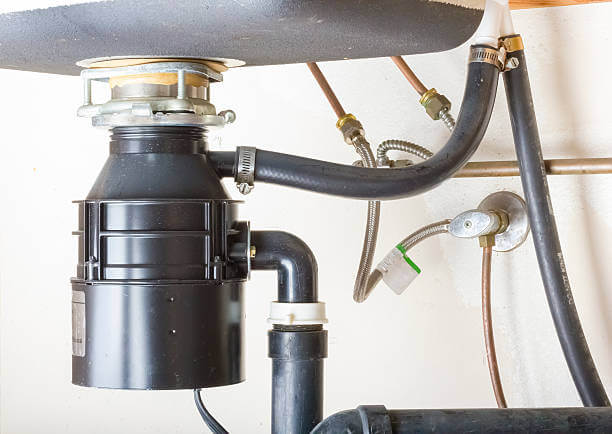
Need assistance with your garbage disposal? Modernize connects homeowners with trusted local professionals specializing in garbage disposal installation and repair. Explore our resources or get matched with an expert to ensure your project is handled safely and efficiently so you can get back to cooking.
Compare top-rated plumbing pros in your area.
Read real homeowner reviews, explore qualifications, and view promotions. Modernize makes it easy to browse professionals and find one that will be perfect for your project.

